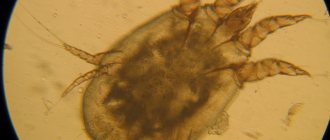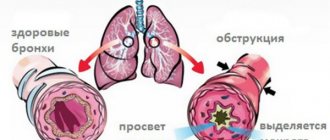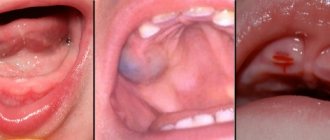Home / Newborn / Teething in infants: main symptoms
24141
1
Teething in a baby is both a great joy and a small tragedy in the life of parents and baby. It is at this time that many young mothers must undergo a test of strength and endurance for the first time. It’s great if the child reacts calmly to the first teeth. But more often, teething symptoms bring babies a lot of unpleasant sensations, to which they respond with a violent reaction.
All children are unique, and observations carried out on infants have proven that the symptoms of teething in infants vary widely and depend entirely on certain factors and individual characteristics of the body. The main thing is to carefully monitor the child’s well-being at this difficult moment for him and, if necessary, provide him with help.
Signs of teething in babies
Due to the fact that each person’s body is individual, it is impossible to create one single list of symptoms. The fact is that even the time of discomfort can vary. Some children may experience negative symptoms for only a few days, while others suffer for several months before the tooth finally breaks through the gum.
This depends on the number of teeth that grow at the same time and the thickness of the gums. In addition, the symptoms are not necessarily all present. However, let's figure out what are the signs of teething in a baby.
Symptoms:
- The temperature rise is most often within 37-38 degrees.
- Swelling of the gums, accompanied by hyperthermia and redness.
- Diarrhea may occur in infants.
- The baby begins to actively pull all surrounding objects into his mouth, including his own fists. This is due to the fact that the eruption site is itchy and causes severe discomfort.
- This period is characterized by changes in eating behavior. Some babies begin to breastfeed more actively, while others, on the contrary, practically refuse it. This moment should be treated with understanding, because the baby is experiencing quite severe pain.
- Against the background of decreased appetite, indigestion may also appear.
- The pain can be not only local, but also felt in the ears and even the head. In addition, many children develop nasal congestion, which goes away on its own after the process is completed. Pediatricians agree that such conditions most often develop in infants with weakened immune systems.
- Salivation increases.
- The baby becomes restless and capricious. Possible sleep disturbance.
Important! If the body temperature is above 38 degrees Celsius, the baby is apathetic and suffers from diarrhea and lack of appetite for more than a day, then you should immediately consult a doctor.
This condition may have nothing to do with teething, but indicate a serious illness.
Can there be deviations from the established deadlines?
No parent can speed up or delay the process of teething in their child. The order in which these bone formations appear is determined in the womb. However, there may be pathologies in which there is a strong shift in eruption.
If you notice the early appearance of teeth (between the ages of one and three months), this may be the result of a variety of diseases of the endocrine system. In this case, it is worth getting examined as soon as possible. Perhaps the early appearance of teeth is an individual feature of your baby. However, it is worth making sure that the problem really does not exist.
If the baby has not developed teeth by the end of the first year of life, then you should also be a little concerned. It is worth noting that most new mothers begin to sound the alarm at the age of 7-10 months. However, this is absolutely unfounded. A clear indication for examination is the fact that at least one tooth is missing at the age of 12 months in a child. Most often, a delay in teething is associated with a lack of calcium and vitamin D, which in turn can be a symptom of rickets. Also, diseases of the thyroid gland can have an inhibitory effect on teething in children.
Another deviation from the generally accepted timing of teething is their incorrect order. Often mothers take this fact as an individual characteristic of the body. In fact, this consequence arises as a result of a failure of intrauterine development. If the expectant mother suffered any illness or led an unhealthy lifestyle during the period of teeth formation, then you should not be surprised at this phenomenon.
In some cases, teething in babies (symptoms will be described below) can occur simultaneously. In this case, for example, not two, but four or more incisors come at once. Of course, this fact somewhat shifts the generally accepted deadlines. However, this is not considered a pathological deviation from the norm.
Which teeth appear first? Sequence. Appearance time
The timing of the eruption of the first teeth in infants varies significantly. If previously six months of age was set as a guideline, now pediatricians are more focused on the individual characteristics of children. So, even in identical twins, the timing of the appearance of incisors can vary dramatically.
There are two diseases that can prevent the timely appearance of teeth:
- Rickets is characterized by the body's inability to absorb vitamin D, which leads to impaired bone development.
- Adentia is a disease in which the baby does not have the rudiments of baby teeth, and therefore there is nothing to grow. This condition is diagnosed using x-rays.
If the baby is completely healthy, receives adequate nutrition, and is well cared for, then you should not succumb to unnecessary worries. It is better to let the body develop at its own pace. Many parents are interested in the question of which teeth emerge first in infants. The answer to this is quite clear in the specialized literature. It is believed that the lower front incisors should appear first.
The following is the order and time of eruption of baby teeth in children, which is taken as a basis by pediatricians when examining infants.
Sequence and time of appearance:
- Incisors, which are located directly in the center of the jaw. The lower ones begin to grow first, their appearance occurs in a period of six to ten months. The upper incisors begin to grow at seven months of age. On average, they fall out by the age of six to seven years.
- Lateral incisors are located immediately behind the first ones. The lower ones appear from seven to sixteen months, the upper ones from nine months to a year. Loss occurs after the age of seven.
- Canines – located between the incisors and molars. The lower and upper canines begin to grow at approximately the same time, between sixteen and twenty-three months. Occurs between nine and twelve years.
- The first molars, which are also called molars. The lower ones begin to erupt within a year to one and a half years, the upper ones appear on average a month later. They fall out from nine to twelve years of age.
- Second molars are located behind the first and perform a chewing function. The lower ones grow in the interval from twenty to thirty-one months, the upper ones - from twenty-five to thirty-one. They fall out by the age of ten to twelve.
We have already found out what time infants start teething; now we need to figure out how to help the baby survive this period with the least discomfort.
When babies cut their first teeth, what are the symptoms and how can you help your baby?
The very first months of a baby's life are marked by an absolutely toothless smile - it is equally cute in boys and girls. But finally the first bulge has appeared on the gum - newborns are starting to cut their teeth. How many months does a baby start teething, what symptoms are typical and what is the plan for thinning them.
Boys and girls begin to cut their teeth at different times, but in any case, it is worth taking into account what circumstances influence this timing.
However, the question of when a baby’s teeth begin to grow should be considered from an individual perspective - if they began to grow later or earlier, then this should not immediately be considered a deviation from the norm.
Factors influencing tooth growth in children
There is a popular belief that girls’ teeth begin to grow earlier than boys’ – this is more of a theory that grows at the level of assumptions than a proven fact.
Alternatively, according to statistics, it may be clear that girls cut their teeth earlier than boys. At the same time, it is worth remembering and taking into account a number of factors due to which teeth may erupt later:
- Diagnosing a child with rickets and weak immunity can delay teething by up to six months.
- Failure of the endocrine system and late complementary feeding.
- The birth of a premature baby and edentia, in which the rudiments of baby teeth are missing.
When do babies start teething?
Timing of teething:
- The first teeth in infants are the first 2 incisors on the top and bottom of the child’s jaw, which appear at 7-10 months.
- The next ones are 4 incisors, which appear by the end of the 1st year of life.
- The very first molars in girls and boys begin to emerge between the ages of 1 and 1.5 years.
- When the fangs come out - this is the second half of the 2nd year.
- The second root teeth begin to cut intensively in infants by the end of the 3rd year of life.
As doctors note, babies’ first teeth begin to emerge at 7-8 months. If the time frame is somewhat delayed, parents should take the child to a pediatrician and dentist.
https://www.youtube.com/watch?v=QlbJluo_KPE
If we talk about the fact that the timing of the appearance of teeth may be atypical, this may indicate certain disorders in the baby’s body.
- If teeth come in 2 months later than normal, this may indicate an infectious disease in the body, a malfunction in metabolic processes and the functioning of the gastrointestinal tract.
- When teeth come in 2 months ahead of schedule, this may indicate a malfunction of the endocrine system.
- If the tooth is cut incorrectly, outside the gum, this indicates an incorrect position of the tooth axis. In this case, surgeons will have to intervene, using special bales and prostheses to guide it correctly.
If there are certain suspicions of pathology or its detection, it is best to show the child to a doctor.
It is imperative that the child be shown to a pediatrician and a pediatric dentist if the teeth of a one-year-old baby have not erupted.
The first signs of teeth appearing in a child
The question is: when do the first teeth cut, how does this manifest itself, what signs indicate this? This is a rather rhetorical question, since the appearance of teeth and their eruption will immediately be reflected in the baby’s behavior. So the signs of this physiological process in a baby show themselves as follows:
- Redness and intense swelling of the gums, they will itch and hurt intensely - the child sleeps restlessly and may cry, put everything in his mouth that comes to hand.
- A somewhat sour characteristic odor appears from the oral cavity - the mucous membrane is decomposing and can provoke its appearance.
- The baby has abundant, even intense salivation and some swelling of the cheeks.
It is also worth understanding that these are the very first and less alarming symptoms and teething can also show more severe manifestations.
If such symptoms appear, it is best to call a pediatrician at home or come to an appointment at the clinic and show the child to a doctor.
He will conduct a study and rule out or confirm another cause of such negative symptoms, which may or may not be related to teeth.
In particular, doctors consider several basic symptoms to be dangerous signs, which should never be ignored.
- The physiological process is accompanied by severe coughing attacks. In particular, excessive salivation and a large amount of saliva will flow down the throat and provoke coughing attacks in the child. The baby's cough reflex attacks will intensify when lying down - it will become wet and intrusive, and will interfere with sleep and eating. Parents may suspect an infectious lesion of the body - a cold, and in this case its attacks will last more than 2-3 days. May be accompanied by shortness of breath and difficulty breathing - this may indicate inflammation of the upper respiratory tract.
- Copious discharge from the nasal passages - normally it should be clean and transparent, like water. Such symptoms most often go away after 2-3 days - just rinse the nasal passages with a salt solution. If an infectious process develops, the nasal discharge will be quite abundant, its color will become yellowish or greenish, and last more than 4 days.
- Excessive saliva production in a baby can provoke stool upset - when it gets into the digestive tract, it accelerates intestinal motility and provokes diarrhea 2-3 times a day. When an infectious process occurs in the body, diarrhea will bother the child more than 3 times a day, interspersed with mucus and blood. Thus, inclusions in the stool of blood can indicate intestinal infections and disorders of the digestive system.
In such cases, it is worth taking the child to the dentist. It is also worth taking your baby to a specialist in case of not only prolonged diarrhea and the threat of dehydration, but also in case of the exact opposite phenomenon - constipation.
If a child’s immunity is weakened, during teething he may develop diseases of the oral cavity. Most often the following pathologies show themselves negatively:
- Thrush - it is provoked by a fungus from the genus Candida and is classified as a fungal disease that develops against a background of weakened immunity. In this case, the child’s gums and tongue will become covered with a whitish coating, itching, decreased appetite, and increased pain will appear.
- The development of stomatitis in a child - ulcers and wounds can cover the oral cavity, causing a lot of anxiety for the baby and parents.
In such cases, it is worth showing the child to a pediatrician - this will eliminate any negative consequences and give advice on how to alleviate the baby’s general condition at this stage of its development. This will help both the baby and the parents, and all negative symptoms can be overcome easily and without any special difficulties.
How to help your baby teething?
Teething is a difficult process, so parents should help the baby get through it without problems or discomfort. There are a number of tips on how to help your child survive this period:
- First of all, a light massage of the gums is necessary - this will help relieve pain and improve blood flow. They do it before going to bed, having thoroughly washed their hands and, if desired, lubricated their fingers with vegetable oil - make all movements smoothly to prevent injury to the gums.
- Give your baby a toy to play with - a teether. Most often, they are presented on the shelves of children's stores made of silicone or rubber - the baby chews on them, providing additional massage to the gums, which will help alleviate the condition.
- Helps soothe sore gums and cold - just moisten a linen napkin in cool, but not cold water and give the child to chew. Instead of clean, cool water, you can take a chilled decoction of chamomile flowers - it will help relieve inflammation and soothe the gums. You can also give your baby a pacifier or a cooled teether made from gel compounds.
These time-tested methods of alleviating the baby’s condition can be supplemented with more modern means, using pharmaceuticals.
- Dentinox;
- Kalgel;
- Kamistad;
- Pansoral.
Dental special gels do not negatively affect the process of natural teething and relieve pain. This is achieved due to the menthol and lidocaine contained in the preparations - during their use it is worth monitoring the reaction of the child’s body, since the drugs can provoke allergies and thereby worsen the general condition of the baby.
The main thing to remember is that this helium composition lasts no more than half an hour and can be used no more than 4-5 times a day, for a maximum of 3 days.
If the baby’s pain is severe, you can use painkillers. But before choosing this or that drug, you should consult with your pediatrician.
During the period when a child is teething, it is worth removing all small objects from his environment, since the baby puts everything in his mouth and can swallow a dangerous object, injure internal organs, or suffocate.
Also, all toys should be disinfected regularly.
How to help your baby
First of all, you need to contact your pediatrician so that, after a thorough examination, he can rule out the possibility of any disease. Currently, there are a large number of medications aimed at reducing pain sensitivity. However, their use can only be prescribed by a doctor. Thus, the gel has shown itself to be excellent during teething in infants, which “freezes” the teething site and helps the baby survive this unpleasant moment.
If you do not want to use pharmaceutical drugs, you can buy a teether for your baby. There are a huge variety of them and you can always choose the best option. The purpose of this device is to massage the gums, which speeds up the appearance of teeth and also distracts the baby from painful sensations. The main thing is to keep them clean, because microbes on the surface of teethers can cause stomatitis in children.
Types of teethers:
- A latex brush in the form of a fingertip, which is placed on the mother’s finger, and with the help of which she massages the baby’s gums. The stimulation effect is quite gentle and is suitable for very young children.
- Teether rattle. This is an excellent option to alleviate the baby's condition. This type combines a plastic part that can be chewed and a rattle that will distract the baby.
- Teether with cooling effect. This device contains water or a special gel. It is first cooled in the refrigerator and only then given to the child. This provides a freezing effect and reduces the sensitivity threshold. It is better to use after one year of age.
- Vibrating teethers. The effect of massage is most pronounced in this form. When biting, vibration is triggered, due to which a massage effect is achieved.
There are also a number of recommendations that will help the baby, but are not directly related to the oral cavity.
Due to increased salivation, dehydration occurs. Therefore, during this period it is necessary to give the baby more to drink to avoid this. It is also better to protect your baby's face and chest with baby cream to avoid chapping. This is especially important when walking outdoors in the cold season.
Pay more attention to the little man by playing and communicating with him. Thus, he will be distracted from unpleasant sensations and will feel loved. It is better if the games take place in a vertical position, the blood flow to the head will decrease, and, accordingly, the pain will decrease.
At high temperatures, the use of antipyretics is permissible. In addition, they have an analgesic effect to varying degrees.
How to relieve pain?
Signs that a child will soon have his first teeth will be immediately noticed in the family. At this time, rare children remain calm and do not cause trouble to their parents. Most children go through this difficult period in their lives, showing violent discontent. How to relieve pain and discomfort for a child?
What can a young mother do?
- Monitor body temperature. If a child sleeps poorly, refuses the breast or bottle, is capricious, and all this happens against the background of an elevated temperature, it must be brought down. First, you can try to bring down the temperature without medication: undress the baby, remove his diaper, put him naked under one sheet, offer water - these simple methods can reduce body temperature to normal values. If this does not happen, the child should be given an antipyretic drug based on Paracetamol.
- Relief of discomfort in the gum area. To solve this problem you will need refrigerated teethers, a hard pacifier, and a gel with an anesthetic effect. Since each child is unique, a remedy to relieve itching and pain in the gums must be selected individually. Some people like teethers, while others cannot do without anesthetic gels.
- Often, to relieve discomfort in the gums, young mothers use a chamomile decoction, which is gently rubbed into the gums and irritations on the baby’s cheeks and chin. Bee honey has the same effect.
- As soon as the teeth begin to cut, the baby is offered solid food - an apple, a fresh cucumber. If your baby persistently refuses his usual food, you can temporarily replace it with cool baby foods, such as fruit puree or yoghurt. It is also important to prevent dehydration, since along with increased saliva production, the child’s body loses a lot of fluid.
What signs are common to all children when teething? It must be remembered that their appearance is a purely individual process. The sensations during teething, the speed of the process and the child’s tolerance of pain - it all depends on the individual baby. Fortunately, this picture concerns only the appearance of the first milk teeth.
What to pay attention to
It is important to constantly monitor the baby’s health and carefully record any changes in his behavior and well-being. The growth and development of a baby up to one year of age is always associated with certain difficulties. You should not attribute any ailment to illness, but it is also important to promptly notice pathological symptoms that may indicate illness.
With the onset of six months of age, many mothers begin to attribute any ailment of the baby to the process of the appearance of the first incisors. And some even look for how babies teeth erupt in photos on the Internet. The success of this enterprise is quite doubtful, because each child is absolutely individual.
In addition to completely safe symptoms indicating tooth growth in a baby, there are certain pathological disorders that are worth paying close attention to.
Possible negative consequences:
- Cough – its occurrence is not an absolute norm, but can occur for completely physiological reasons. Saliva produced in large quantities can accumulate in the larynx area. The baby is not yet able to swallow it reflexively. This is why a cough occurs, which is important to distinguish from a cold.
- Runny nose - the appearance of snot can also be associated with salivation. Saliva can enter the nasopharynx and from there into the middle ear. Therefore, ear pain can also be observed.
- Disruption of the gastrointestinal tract. Saliva and mucus, along with food, enter the baby's stomach, which often causes negative consequences. Diarrhea, constipation, vomiting - such disorders are not so rare. It is especially important that the diarrhea does not last longer than three days, and that it does not contain blood clots or other black inclusions.
- An increase in temperature is the body’s physiological response to the inflammatory process. A rise in temperature to 38.5 is not considered a pathology. However, we are only talking about high thermometer readings throughout the day. If the fever is severe and lasts more than twenty-four hours, then you need to visit a pediatrician to exclude the possibility of a serious illness.
It is also worth noting that certain aspects can affect the speed of teething. This moment is not always pathological, but it must be kept under control.
Affects the speed of appearance of the first incisors:
- serious metabolic disorders;
- problems with the endocrine system;
- past infectious diseases;
- some disorders of the gastrointestinal tract;
- hereditary factor;
- proper nutrition;
- maternal behavior during pregnancy, especially before the eighth week of gestation;
- water quality, as well as the climatic conditions in which the family lives.
Painful teething: advice for parents
The natural desire of the child’s parents to help him during this difficult period is completely understandable, but any intervention in the process must be done wisely.
Under no circumstances should you:
- Scratch the child’s gums with your finger without using a fingertip, since under the nails there are a huge number of pathogenic microorganisms.
- Help a tooth erupt by tearing or cutting the gum. In addition to introducing pathogenic flora into the oral cavity, the method is dangerous due to the formation of a hematoma on the gum, which in the future may require surgical intervention.
- Smearing the gums with garlic or onions will lead to a burn of the mucous membrane, followed by its rejection and the occurrence of various stomatitis.
Unlimited parental attention and affection will help the baby safely survive the period of teeth growth. Breastfeeding also has a beneficial effect on the child, supporting the child’s immunity and giving him a basic sense of security.
Medicines for babies with swollen gums
Swollen gums can cause a lot of inconvenience for both the baby and his parents. There are times when folk remedies alone are not enough, and then you have to resort to medications.
First of all, you need to understand how infants cut teeth, this is shown in the photo below. But it is better to consult with a specialist who can evaluate the picture in full and prescribe appropriate treatment.
Depending on the principle of action, all medications for gum pain relief in newborn babies are divided into:
- homeopathic;
- cooling;
- anti-inflammatory.
Homeopathic remedies have an anti-inflammatory effect. It is because of this that the analgesic effect occurs. The positive side of this type of product is its naturalness and lack of side effects. Although their influence may be rather weakly expressed.
Cooling gels for gums have an antimicrobial and “freezing” effect. Pain relief in this case is much more pronounced. Their use is allowed from the age of five months. In addition, the maximum effect is achieved within a few minutes after application.
Anti-inflammatory drugs do not contain analgesic components, but relieve pain by reducing inflammation. They can even be applied immediately before feeding. But the side effects are: increased salivation and burning at the application site for several minutes.
General medications used for teething in infants also include antipyretic drugs, which, along with relieving fever, also have an anti-inflammatory effect.
Restless behavior and unexplained crying
Symptoms of teething in a child (4 months and older) are almost always expressed as anxiety. The baby suddenly begins to cry and behave differently than he did a few minutes ago. Also, the pain from teething may not be sharp, but increasing. In this case, the baby may whine for a long time and behave irritably.
It is worth noting that this phenomenon can be a sign of any other disease, for example, fever or headache, accumulation of gases in the intestines or simple hunger. Before providing first aid to your child, you should make sure that these are teething symptoms. In addition to restless behavior and crying, babies may exhibit other signs.
Adviсe
- We have already figured out how babies teeth cut, and how you can relieve the baby’s pain. However, there are also a number of tips that can be very important for the future health of the baby.
- During severe drooling, you should blot the saliva with a soft diaper, this will help avoid irritation on the baby’s face and chest.
- It is prohibited to use medications that are not appropriate for the baby’s age, as well as to prescribe them without authorization.
- After teeth appear, it is necessary to begin oral hygiene. Up to one and a half years, you can use a soft brush with silicone teeth. Later it is replaced with a baby one with the usual bristles, only quite soft.
- Sweets should be limited in the baby’s diet to avoid the development of caries.
- Oral care should be done at least twice a day. It is better to rinse your mouth after every meal.
- Toothpaste should be selected according to the age of the child. Ingesting it is acceptable, but still undesirable.
When do children's first teeth begin to grow?
In most children, the first tooth grows by the age of six months, and the range of its appearance is quite wide: it happens that it appears both at two months and closer to a year. These options are also considered normal.
In boys, the appearance of the first tooth occurs on average later than in girls, and this is absolutely normal.
Video about teething of incisors in infants
In this video, Dr. Komarovsky will give comprehensive information regarding the appearance of teeth in infants. When do the first of them erupt, and with what difficulties is it associated?
Despite the fact that the birth of a baby is a wonderful event in the life of every family, it is most often associated with certain difficulties. Is it easy for your baby to grow teeth? What symptoms appeared and in what form? What saved your baby from pain? Share your experience with our readers in the comments.
Timing and order of teething
In newborn babies, there are normally 20 follicles of temporary (or baby) teeth located in the thickness of both jaws. As they grow older, they mature (usually in pairs) and begin to erupt. Each child is individual, and the timing of teeth appearance may depend on many factors, from heredity to diet. Average approximate times are given in the table below:
| Appearance of teeth | Age in months |
| Top row | |
| central incisors | 8-12 months |
| lateral incisors | 9-13 months |
| fangs | 16-22 months |
| first molars | 13-19 months |
| second molars | 25-33 months |
| Bottom row | |
| central incisors | 6-10 months |
| lateral incisors | 10-16 months |
| fangs | 17-23 months |
| first molars | 14-18 months |
| second molars | 23-31 months |
Dentists believe that the later a tooth appears, the later it will be replaced by a permanent one. However, you should pay attention to the presence of at least one tooth before the age of one year - otherwise, it is important to go to the doctor to rule out possible endocrine disorders and other diseases that may have such a symptom.
A child acquires a full set of baby teeth by age 3. Normally, there are no diastemas (gaps) between the teeth; they can begin to appear after 4 years as the jaws grow.
In most children, it is possible to track the imminent appearance of a tooth by one or more characteristic symptoms.
Folk remedies
All the unpleasant signs of teething in children were known even when medicine was not so developed. Therefore, there are many ways to alleviate a child’s condition using folk remedies. Among them:
- Cold. You need to keep a spoon or pacifier in the freezer and give it to your baby. The cooled item will relieve pain and soothe the gums a little. For older children, you can offer vegetables, fruits, and juices from the refrigerator.
- Massage. You should soak a small piece of gauze in peroxide or chamomile infusion. They need to carefully wipe the area where the tooth began to cut.
- Motherwort decoction. You need to pour 1 tsp. herbs 0.5 liters of boiling water. Allow the drink to cool slightly, add some sugar and offer it to your child. You can also use valerian root tea.
- Honey. You should carefully smear your gums with honey. It perfectly calms and relieves irritation.
- Chicory or strawberry root. You just need to let the baby chew on the root. This way the child will massage the gums and soothe the pain.
- Soda solution. When teeth are being cut, 1 tsp will help relieve symptoms. soda diluted with a glass of water. You need to moisten a piece of bandage in the solution, wrap it around your index finger and treat your gums with it.
It is also necessary to carefully wipe away any saliva that has accumulated around the mouth. If teething is accompanied by vomiting and diarrhea, the child should be fed liquid pureed food and given plenty of fluids to drink.
There are several folk methods used for the appearance of teeth, which must be abandoned:
- press firmly on the gums with your finger. This will only increase pain and irritation;
- giving your child stale bread or cookies. He may choke on crumbs. Teethers are much safer in this sense;
- wipe the gums with undissolved soda or pick them. There is little benefit from this, but there is a risk of infection.
During the period when the baby is teething, the symptoms are difficult to bear not only for the child, but also for his parents. Baby cries are not one of the classic “joys of motherhood,” but you can’t do without them. But when the baby survives the painful days of teething, he will successfully go through another stage of growing up.
Help to relieve teething symptoms
You need to know how to help your child if teething is causing him trouble. How many days he will have a fever or refuse to eat depends, among other things, on the actions of his parents. Although teeth usually erupt one after another in infants, it is therefore difficult to determine the specific period of eruption.
A high temperature can be brought down by giving antipyretics during teething (in the form of a suppository with ibuprofen or paracetamol in a dosage according to age). The same medications are available in syrup form. A very high temperature (more than 39), which lasts for 2 days or more, should be considered as an indication for immediately calling an ambulance. Diarrhea due to increased salivation when teeth appear is not dangerous for the child, as it happens 2-3 times a day and goes away in a couple of days. A slight runny nose may go away on its own, but caution won’t hurt - drop a saline solution or still mineral water into your baby’s nose several times a day. The appearance of a rare wet cough due to a large amount of drool that occurs when the child is lying down should not cause panic in parents. No treatment is needed here. Everything will pass just like that.
Recommendations for parents
In order to go through the difficult period of teething with minimal losses, it is necessary to carefully monitor the baby’s condition - the body’s immune system at this time is less effective in fighting viral, bacterial and fungal agents, which significantly increases the risk of infection. It is necessary to prevent the child from hypothermia or overheating, and avoid consuming food and drinks from the refrigerator if the child has not previously done so.
It is important to avoid appearing in crowded places and contact with people infected with ARVI, and when visiting medical institutions, use additional prevention methods - wear a mask, use antiviral gels for the mucous membranes. Other recommendations include the following:
- Wipe your baby's chin regularly to remove saliva and prevent skin irritation.
- If your child already has teeth, continue brushing them to remove plaque and prevent the growth of bacteria. If brushing teeth is painful for your baby, you can use a silicone fingertip.
- If your child is over 2 years old, it is time to teach him to rinse his mouth after eating. Their timely removal will prevent the proliferation of pathogenic bacteria in the oral cavity.
And last on the list, but not the least important recommendation - pay more attention to the baby. Poor health can cause disobedience, whims, and tears, but the child needs parental love more than usual - try to pick him up more often and communicate with him. If your baby is still breastfed, do not limit your feeding, even if you have already developed a certain routine. Frequent breastfeeding soothes the baby and allows him to be satisfied during the period when he refuses complementary foods or favorite foods.











